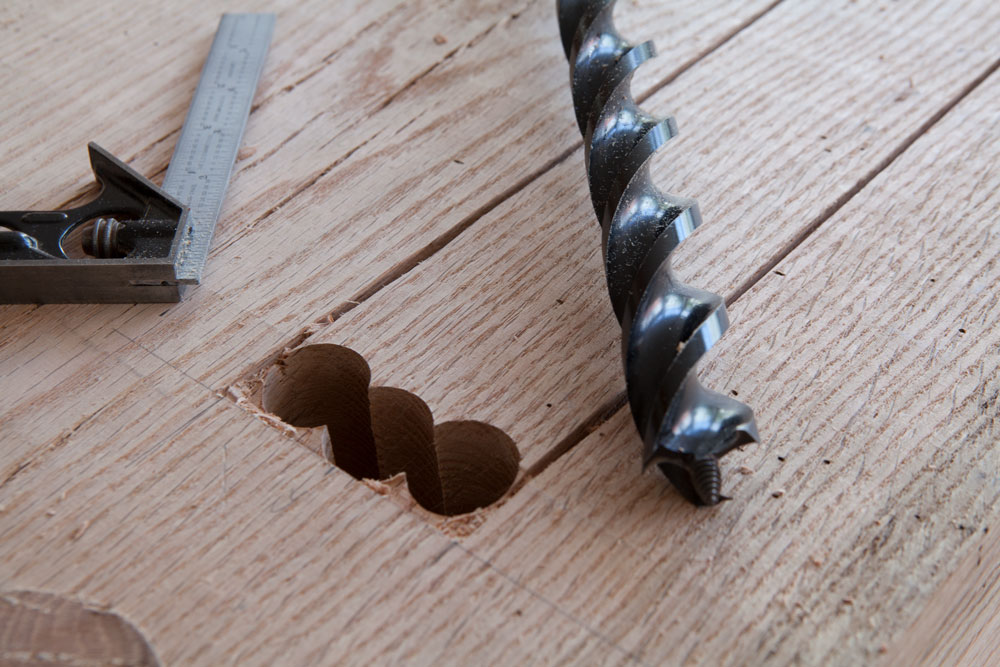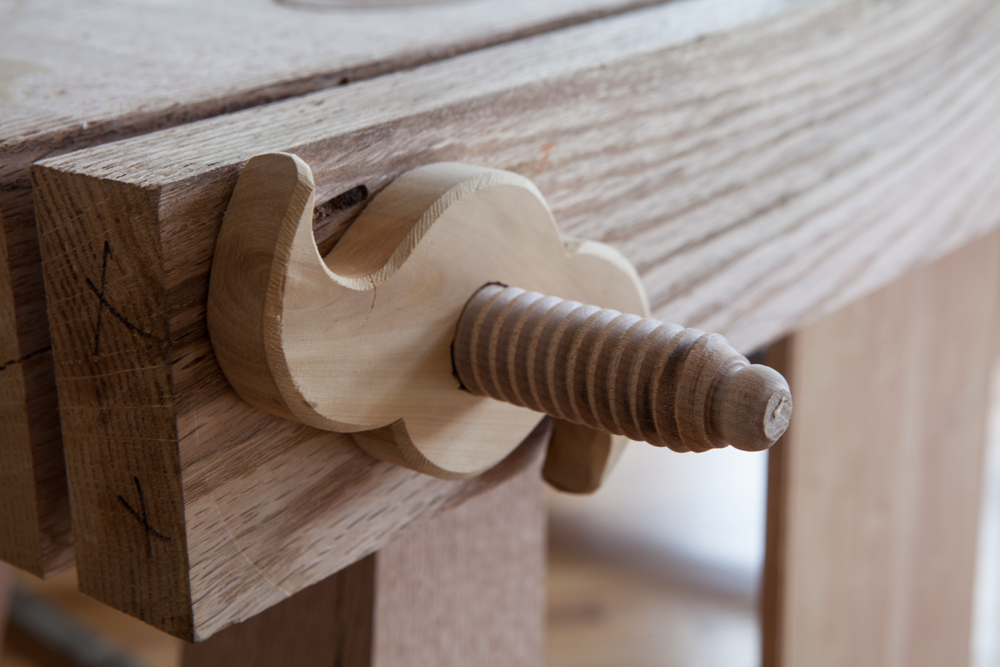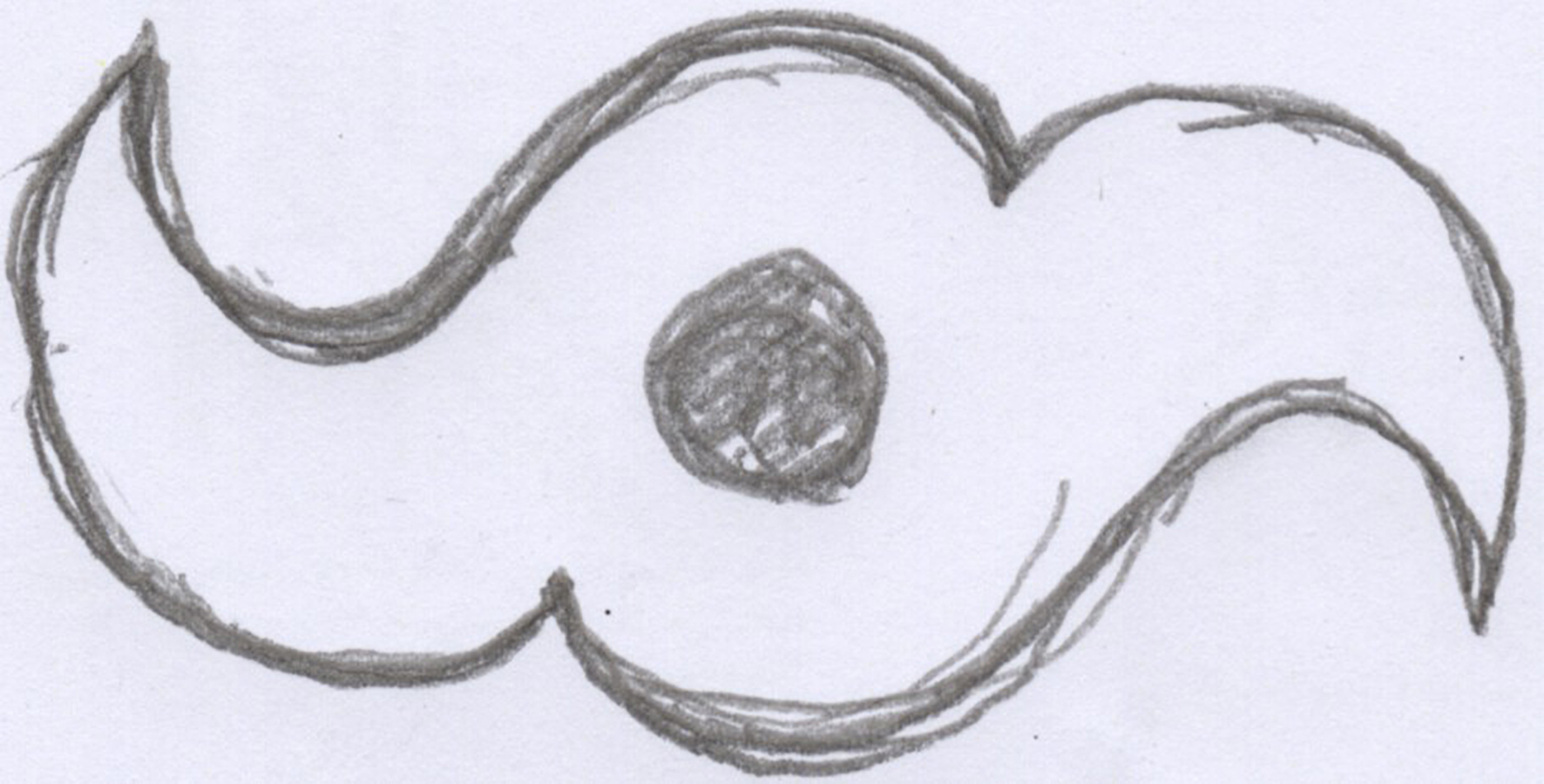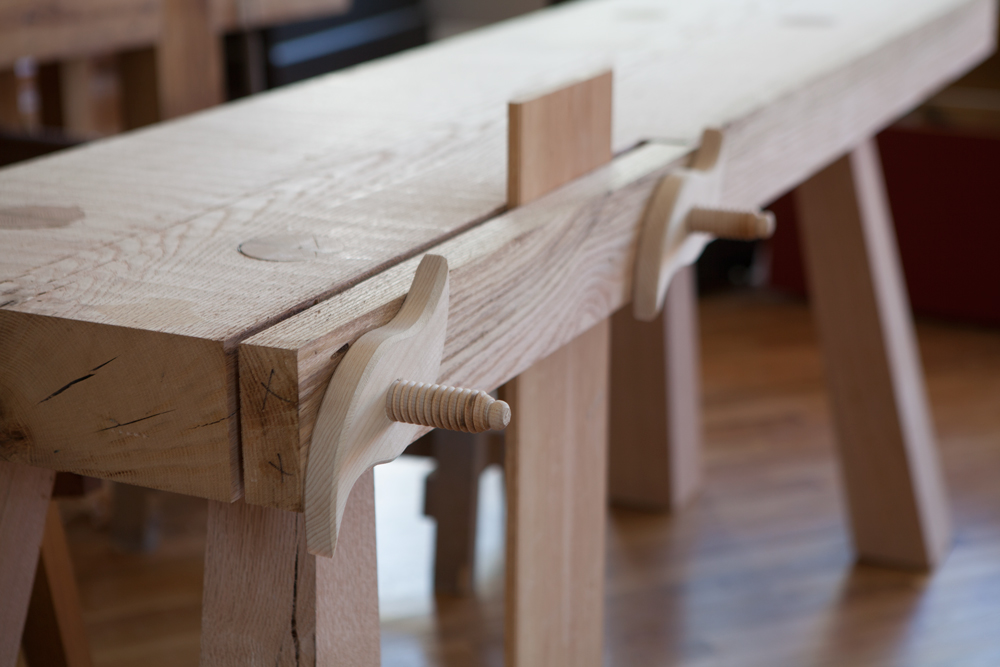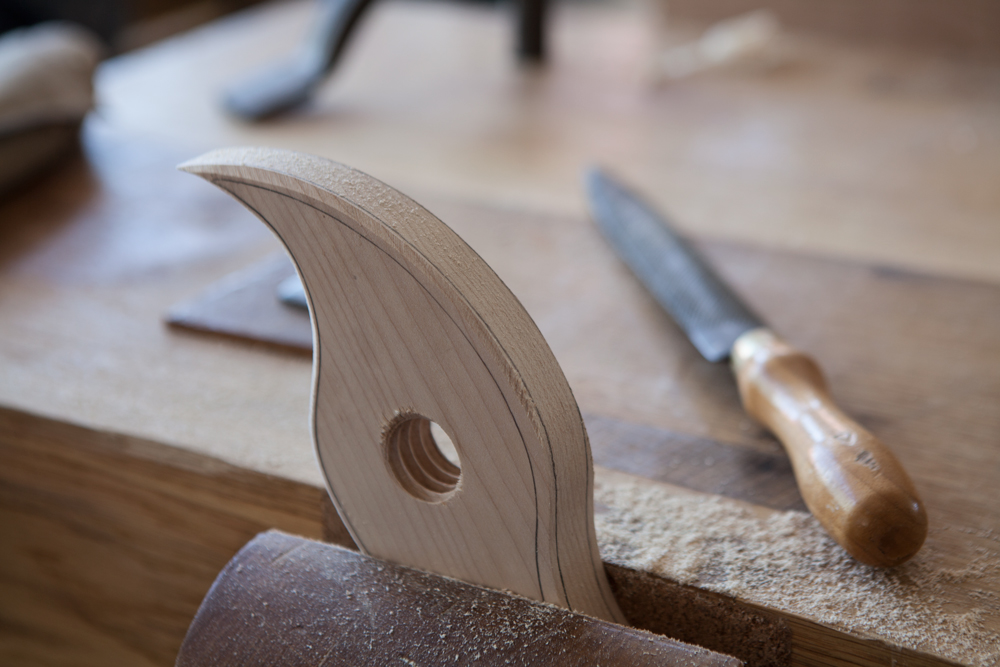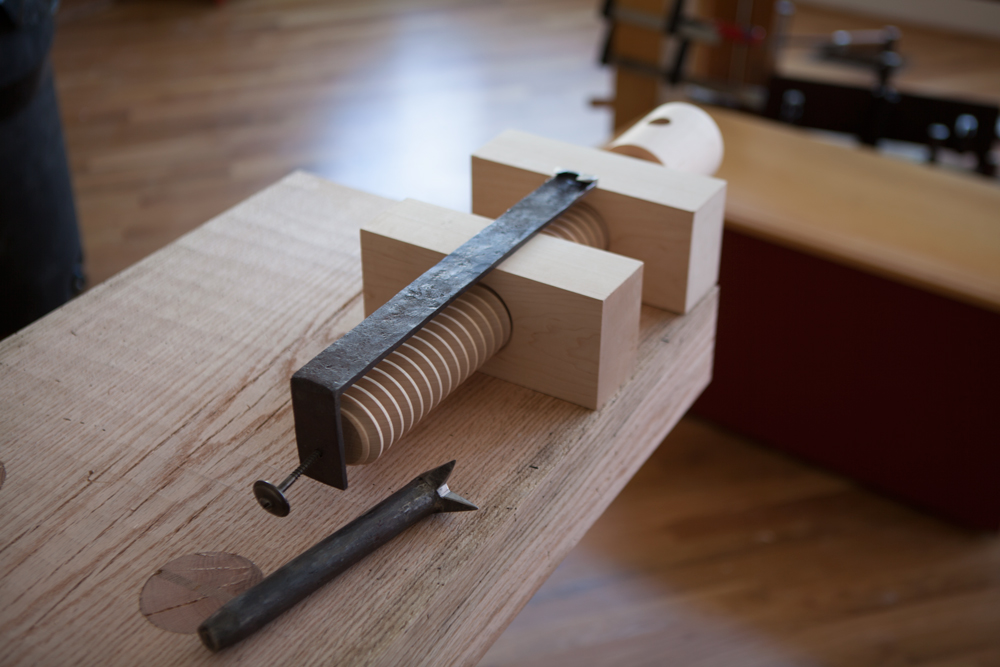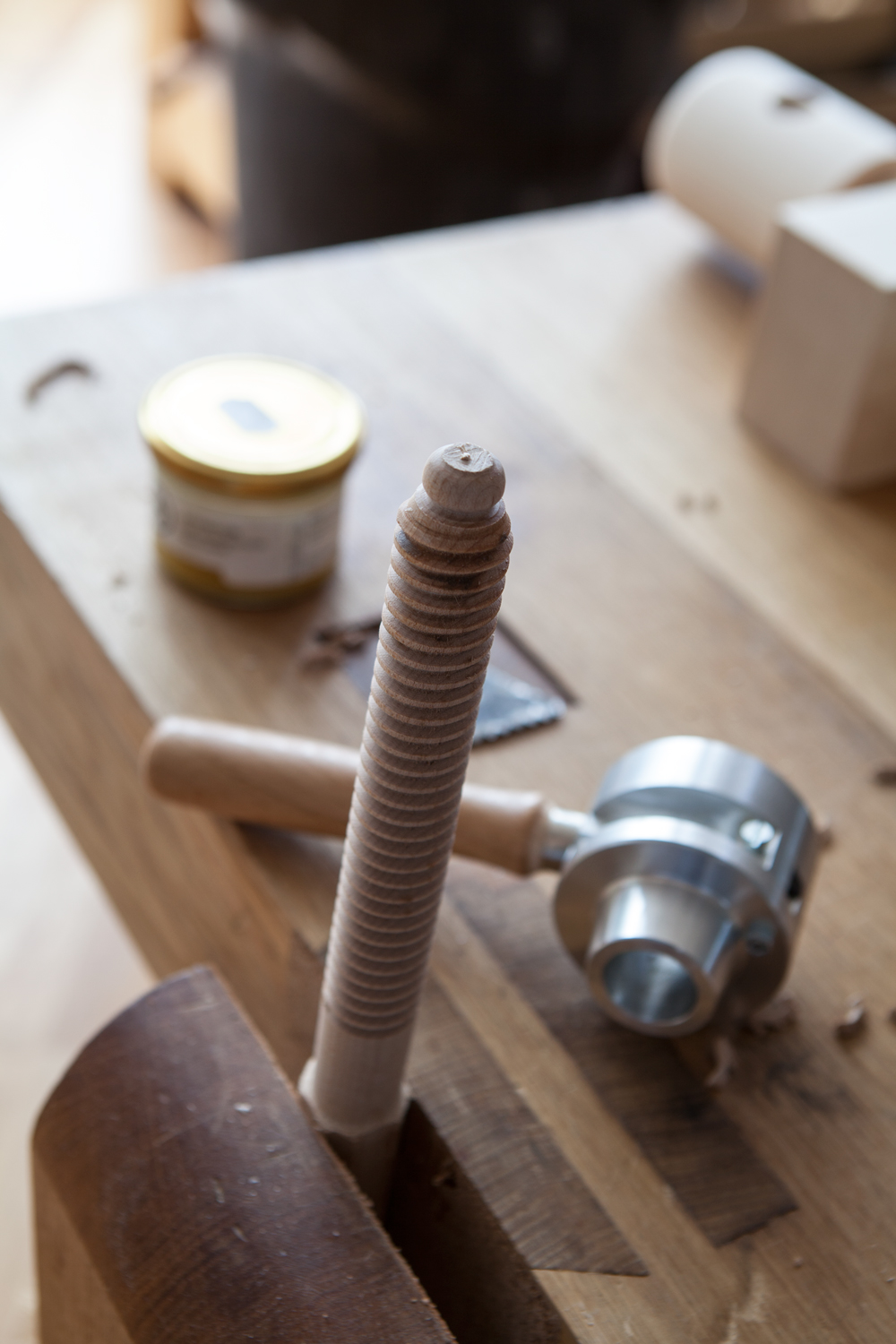
While the jaw of the face vise of this Roman workbench is unusual enough (it’s inset into the benchtop), the screws that operate the vise work unlike most modern vises.
In a modern face vise, the screw turns inside a nut to advance or retract the jaw of the vise. With this vise, the screw is fixed and it’s the nut that moves. This is a very typical construction found in benches from the 1500s up through the late 1700s (and perhaps later).
After weighing all the options for making and installing the screws, here’s how I did it. It might not be the way they did it in 1505 or even the best way, but it was the best method for my tools and the way my mind works.
To make the screws, first I made a 28mm maple dowel on the lathe and left one end square so I could clamp it in the vise. The maple blank was about 12” long, and after threading it I ended up with about 9” of thread.
After threading the dowel with a German-made threader, I cut off the square section.
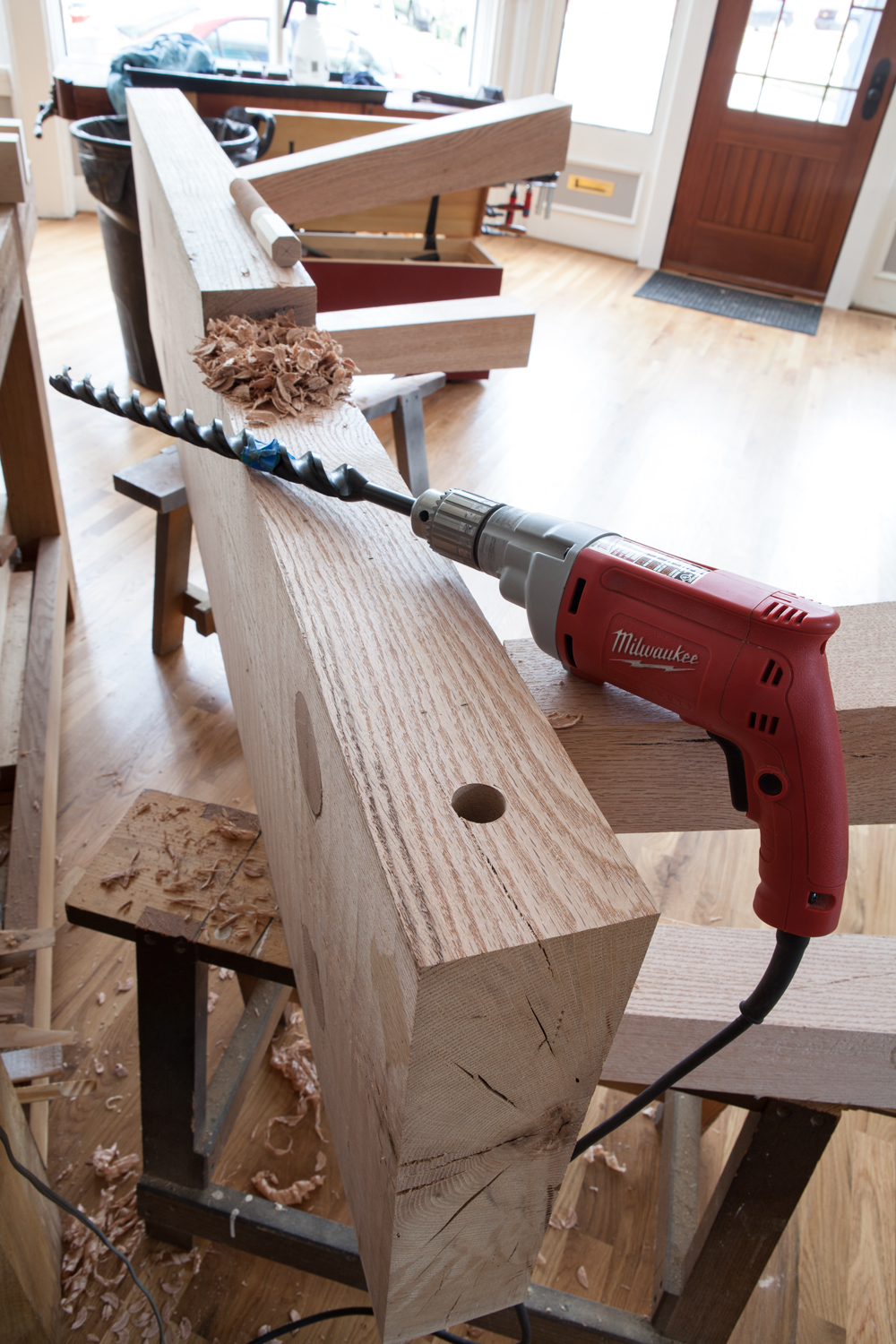
Then I drilled two deep 25mm holes in the benchtop. With my threadbox, you are supposed to bore a 23mm hole. But I used 25mm so I could adjust the screw so it protruded dead square from the benchtop. That 2mm of slop gave me just enough wiggle.
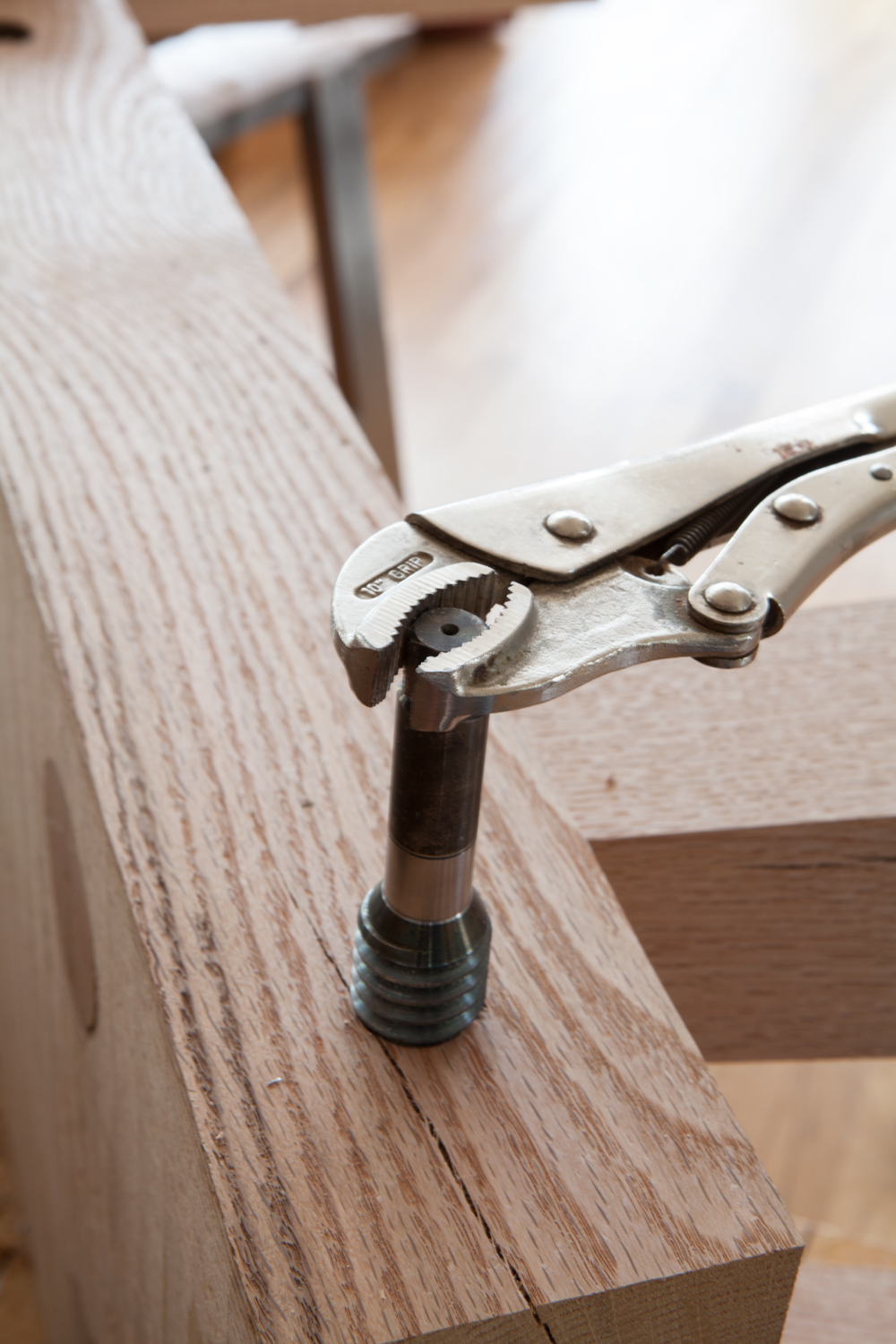
Then I threaded the 25mm holes.
To assemble things, I coated 3” of the threads with epoxy and coated the interior of the holes with epoxy. I screwed in each screw until 6” protruded from the benchtop. Finally, I adjusted the screws so they were dead square with a clamp.
The epoxy filled in the 1mm gap all around the screws, producing a very sound joint.
Why use a modern glue and not hide glue (my favorite glue)? Epoxy has more gap-filling properties than hide glue in my experience. And filling gaps is what I was after. Part of me thought: Wait, don’t I want the joint to be reversible in case I wanted to repair the screws?
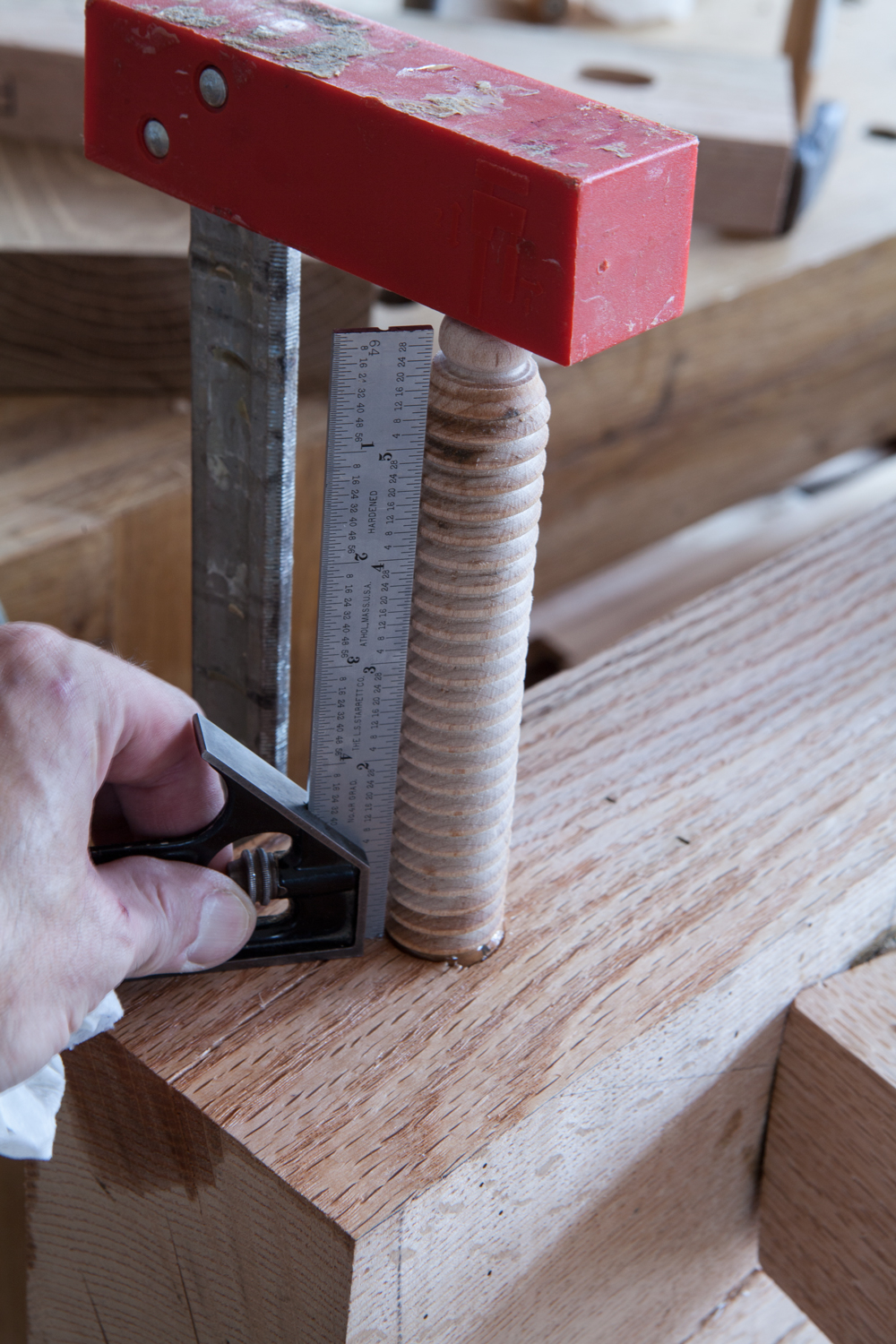
Then the other lobe of my brain answered: How would you repair a damaged 28mm threaded rod? That’s like taking a gerbil to the oncologist. You’d cut off the damaged screw and install a new screw. Duh, other lobe.
So epoxy it was.
Today I also received the hardware for the end vise from blacksmith Peter Ross (it’s gorgeous). I hope to get started installing that stuff tomorrow.
— Christopher Schwarz
Like this:
Like Loading...



